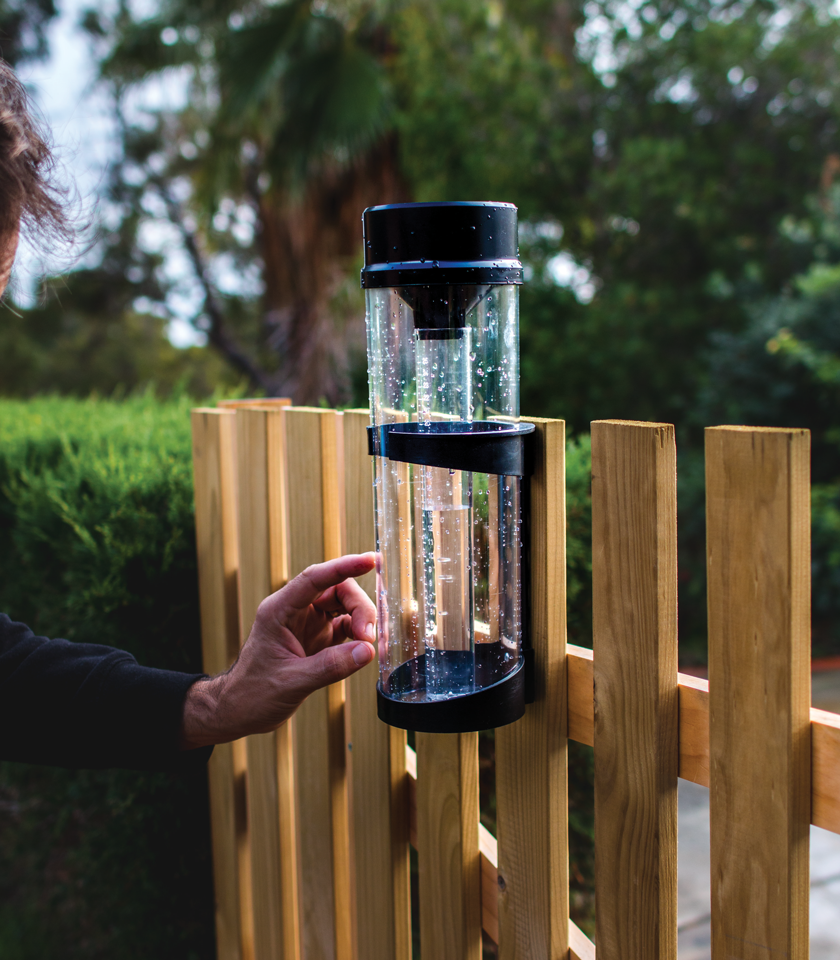Innovative Styles in Rain Gauges: What Makes Them Stand apart
Wiki Article
Introducing the Science Behind Rainfall Gauges: Just How These Tools Play a Crucial Function in Environment Research and Ecological Surveillance
Rain gauges, relatively basic tools, hold a profound relevance in the world of climate research study and ecological tracking. As we peel off back the layers of this scientific veil surrounding rainfall assesses, we uncover a world where precision, data precision, and precise monitoring assemble to unveil a much deeper understanding of our changing environment and its influence on the world.Significance of Rain Gauges
Rainfall gauges play a vital role in surveillance and gauging precipitation levels, offering necessary information for environment research and evaluation. These devices are essential in quantifying the quantity of rains that takes place in a details area over a specific period. By measuring and accumulating rain, rainfall determines offer beneficial insights right into the distribution and intensity of rainfall, assisting meteorologists, hydrologists, and climatologists in comprehending weather condition patterns and trends.
One of the vital factors why rain assesses are critical is their capability to give localized and exact information. Unlike satellite or radar-based dimensions, which supply broader observations, rainfall evaluates offer specific details particular to the area where they are put. This local data is vital for different applications, consisting of flooding forecasting, dry spell monitoring, and water source monitoring. Additionally, long-term information collected from rain determines helps in assessing climate change influences and patterns, contributing dramatically to clinical study and decision-making procedures. Essentially, rain assesses work as crucial devices in the field of meteorology and environmental scientific research, playing a vital function beforehand our understanding of climate and climate characteristics.
Types of Rain Gauges

Performance and Operation
In the realm of climate research study and meteorological researches, the performance of rainfall assesses lies in their detailed performance and precise operational systems. Rain assesses are made to accurately gauge the quantity of rainfall that drops over a certain area throughout a collection period.The performance of rain gauges is based upon the concept of accumulating and measuring rain in a standard fashion. This accumulated data is vital for recognizing regional weather patterns, tracking long-lasting climate trends, and evaluating environmental effects. To guarantee exact measurements, rainfall assesses requirement to be strategically placed in open areas away from blockages such as buildings or trees that might hinder the collection procedure.
The operational element of rain evaluates involves regular upkeep to stop particles buildup, calibration checks to maintain measurement accuracy, and data taping for evaluation (rain gauge). Generally, the performance and operation of rainfall assesses are essential for collecting dependable precipitation information crucial to climate research study and ecological tracking
Function in Climate Research Study
Given the important importance of accurate rainfall measurements in comprehending climate patterns and ecological effects, the function of rainfall evaluates in climate research study is important. Rain determines navigate to these guys give necessary information for environment research study by quantifying the quantity of rainfall that drops over a certain location during a provided period. This information is critical for checking long-term patterns in precipitation patterns, analyzing the effect of climate adjustment on rains circulation, and enhancing climate versions.
Environment researchers use data accumulated from rain evaluates to assess variations in rainfall degrees, determine regional climate fads, and review the performance of water resource management approaches. By contrasting historical rainfall information with current measurements, researchers can spot shifts in precipitation patterns, such as changes in the frequency or strength of rainfall events. This details is important for recognizing exactly how environment adjustment is influencing rainfall characteristics and can assist policymakers make informed decisions relating to adjustment and mitigation methods.
Applications in Environmental Tracking

In flooding forecasting, rainfall gauge information assists to track rainfall strength and distribution, allowing authorities to provide timely cautions and take essential steps to mitigate flooding threats (rain gauge). Dry spell surveillance depends on rain gauge data to examine wetness levels in the soil and track rainfall deficiencies, assisting in the recognition of drought-prone areas and the execution of drought action methods
In addition, rain gauge information plays an important function in water resource administration by offering details on water accessibility and usage fads. This information is used to make educated decisions regarding water allocation, preservation procedures, and lasting water resource planning. Additionally, in farming, rain gauge data assists farmers in enhancing watering schedules, plant option, and total farm monitoring techniques based on regional rainfall patterns. Generally, rain evaluates are indispensable tools in ecological surveillance, offering useful understandings that contribute to notified decision-making and sustainable resource management.
Final Thought
Finally, rainfall evaluates are crucial tools for determining rainfall, providing valuable data for climate research and ecological tracking. With different kinds and functionalities, Web Site rain gauges play a critical role in recognizing rainfall patterns and their effect on the setting. By accurately measuring rains, these devices add to the improvement of scientific understanding and aid in making notified decisions pertaining to water source administration and catastrophe preparedness.Rain assesses play an essential function in tracking and gauging rainfall degrees, offering essential data for environment research and analysis. The common rain scale, known as find the "tipping container" gauge, is one of the most commonly used gadgets. Ultrasonic rain evaluates usage sound waves to detect the existence of rainfall, supplying real-time data on precipitation levels.Environment researchers utilize data accumulated from rain evaluates to assess variations in rainfall degrees, identify regional environment fads, and evaluate the performance of water resource management approaches.In verdict, rain determines are essential tools for determining rainfall, offering beneficial information for environment research study and ecological tracking.
Report this wiki page